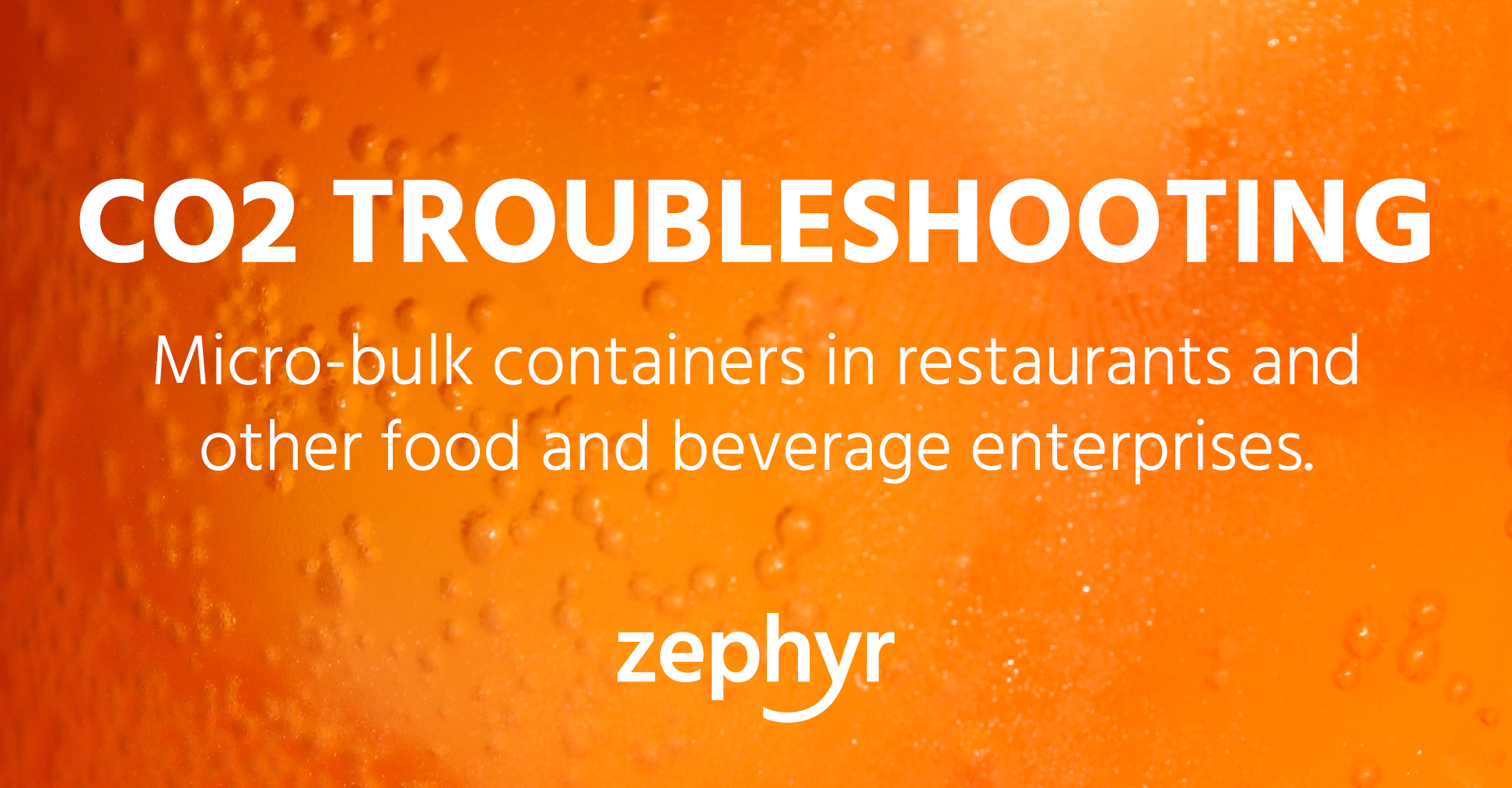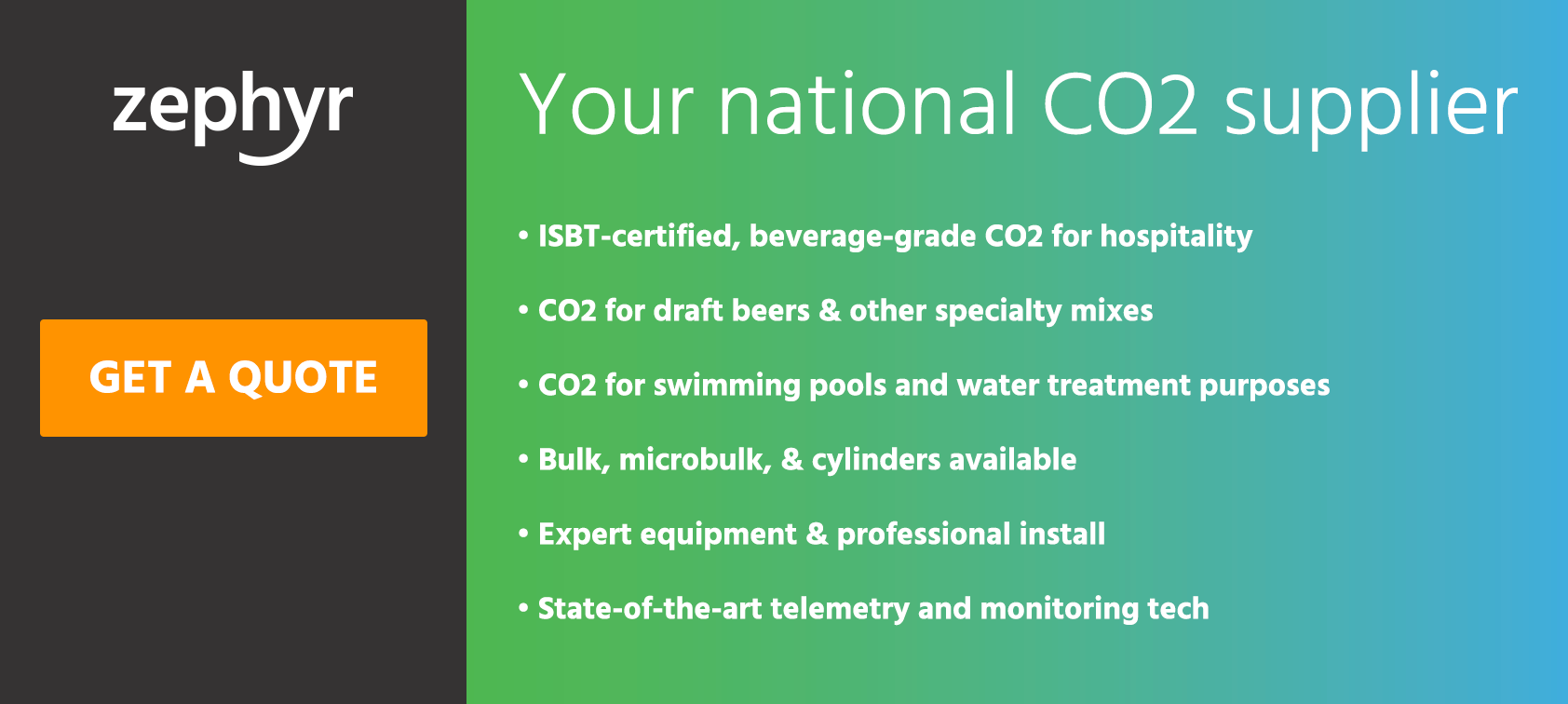Using these CO2 troubleshooting tips for your micro-bulk system, you can quickly diagnose any potential issues and match the proper solution.
The following are the most common issues that restaurants and other food and beverage enterprises run into with their micro-bulk CO2 systems. We’ll address the appropriate response and solution for each issue, and explain a little bit about what is likely the common cause of the problem.
If you are experience a problem that is not in the following CO2 troubleshooting tips, call your gas supplier for more help. Zephyr provides food- and beverage-grade CO2 to corporations all around North America and is a certified expert in the proper handling, storage, and usage of CO2.
If you need further advice on your CO2 problem, feel free to give us a call any time at 1-877-ASKZEPHYR, whether you’re our customer or not. Safety first!
CO2 troubleshooting tips
My CO2 tank/system is not working.
Is one item connected to the CO2 system failing, or is everything? Check other areas of the premises, other drink fountains, or taps.
Can you switch to a backup tank to override your bulk tank? The backup tank is usually near the fountain or syrup boxes. A switch located near the top of the tank can be used to switch from the main tank to the back-up.
If nothing is working, contact your CO2 provider.
My drink tower is not functioning.
This is a common issue but also a source of confusion if you haven’t experienced this before. If your drink tower is not working, this actually is an issue with your beverage system, not your CO2 system. Contact your fountain service agent for assistance with your machine.
My CO2 tank is low or empty and it was just filled recently.
This is another common occurrence that happens when an empty (bag-in) syrup box is left connected. If an empty container is left inside, the pump may continue to operate automatically, which would empty your CO2.
If you’re still experiencing this AND you have not left an empty syrup container in the system, you may need to clean the fitting that connects the pump and the container. Syrup can build up on this fitting if not properly cleaned each time a container is removed, causing a loose fit, which could allow CO2 to escape the seal.
If you’ve cleaned the fitting and have not left any empties in, you have a leak.
I think I have a leak in one of my hoses.
If you suspect a minor leak, you can test the theory with soap and water. Put equal parts soap and water in a spray bottle and soak down the hoses and around the gauges. If bubbles start to form in the solution, you’ve found your leak.
If you suspect a major leak and your CO2 tanks are in an enclosed or indoor area, you should immediately evacuate the area and dial emergency services. You should always have a CO2 safety monitor in the area, which will alert you of a major leak before you could notice it on your own.
Additionally, always make sure the valve on the micro-bulk tank is completely closed tight prior to disconnecting hoses. If the valve is left partially open, or hoses are disconnected before the valve is shut, CO2 will escape.
CO2 safety handling — micro-bulk and cylinders.
Prevent the escape of lingering CO2 gas by fully closing the valve on the cylinder or micro-bulk tank BEFORE disconnecting any hoses.
There is frost on the tank.
This is actually normal in most instances. If you see frost or ice around times of high demand, there is nothing to be concerned with – this is natural.
However, if the front is constantly present and never melts, or is appearing during low-to-no demand time periods, like in the morning at opening, there may be a leak in the system. Call your CO2 supplier right away.
I’m not sure what my pressure gauges should read.
Your micro-bulk gauges should always read as follows:
SUPPLY PRESSURE GAUGE: 95-120 PSI
VESSEL PRESSURE GAUGE: 125-300 PSI
CONTENTS GAUGE: “Empty” to “Full” (like the gas gauge in your car)
If any of your gauges read outside of these PSI ranges, your tank will not have enough pressure to push the CO2 through the system. Call your CO2 supplier.
I hear a hissing noise.
Try to figure out the source of the sound – where is it coming from? Is it coming from the large barrel on the top of the tank? Double check that your gauges are in the correct range (see tip above). If the reading is too low, call your CO2 provider.
If the reading is in the proper range or above, the hissing sound is the vent pressure valve releasing excess pressure. The system is designed to do this and it is perfectly normal. No reason for alarm.
If the hissing is coming from near your beverage system connections, contact your beverage service provider.
It looks hazy around the tank.
If a fog is appearing around the tank or any of the hoses, evacuate the area immediately, open a door or window if possible to vent the room, and call your CO2 provider immediately.
My steel pipes are corroded.
This is a very rare occurrence, but it can happen. If you notice that your carbon steel pipes or equipment are suddenly or slowly corroding, it is possible there is a CO2 leak. CO2 can actually mix with moist air in an environment, forming weak carbonic acid. As this mixture sinks in the air and settles on the ground and on equipment, corrosion can occur.
Immediately evacuate the area, call your CO2 provider and then contact emergency services. Do not touch any of the equipment in the affected area.
Don’t see your issue in the above CO2 troubleshooting tips? Call us – we’d like to hear about your situation, and we’d be happy to help you figure out the fix.
Download these and other CO2 troubleshooting tips as a PDF in our resources section, here.


